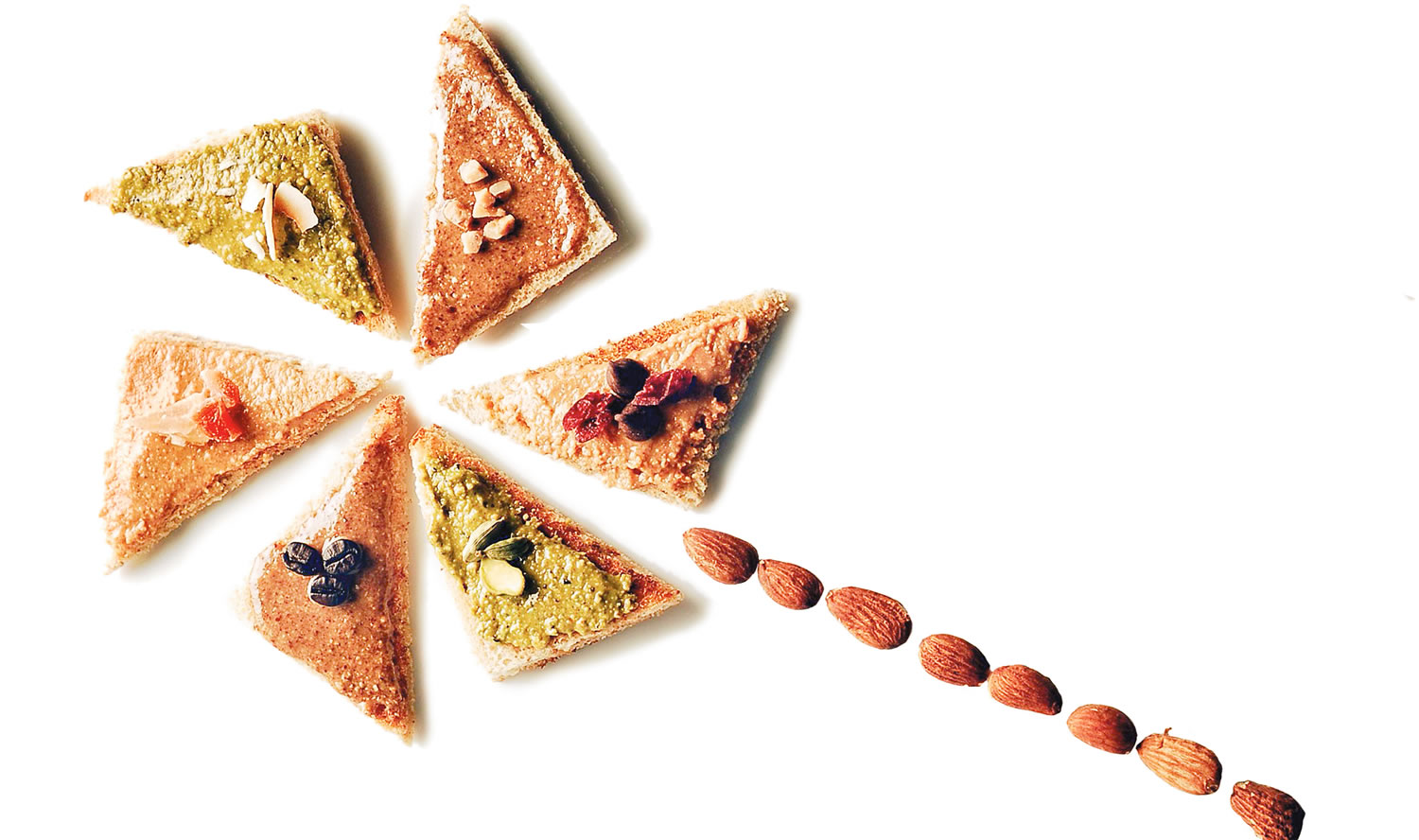o Pistachio butter with cardamom
o Cashew butter with ginger
o Almond butter with espresso syrup
o Peanut butter with toasted coconut and dried pineapple
o Pecan butter with toffee bits
o Peanut butter with cinnamon and raisins
o Hazelnut butter with chocolate
o Walnut butter with cinnamon
o Peanut butter with crisp, crumbled bacon
o Peanut butter with cayenne and garlic paste
NUT BUTTER SECRETS
Roast the nuts to boost their flavor before you turn them into nut butter.
Use a full-size food processor, not a mini. You’ll burn a mini’s motor out before the butter is the right texture.
If you use a blender for nut butter, spray the inside first with cooking spray.
Most nut butters need a little oil. Add it slowly. You can always add more. But once it’s in, there’s no going back.



